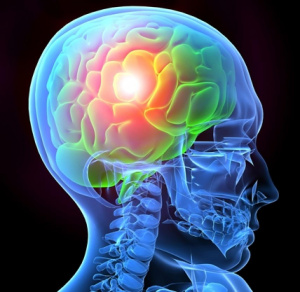Concussions are a common type of traumatic brain injury that results from physical trauma to the brain, usually a hit, blow, or sharp jolt (Mayo Clinic Staff, 2022). But concussions are more than just a bump on the head, they trigger a cascade of complex biological processes that can have both immediate and long-term effects on the brain. The article “The New Neurometabolic Cascade of Concussion” (Giza & Hovda, 2014) highlights the pathophysiology of concussions, connecting how various physiological defects disrupt brain function and manifest themselves as symptoms. 
In the United States alone, over 3.8 million sport-related concussions occur per year (University of Michigan Health, 2019), and its prevalence coupled with the potential for long-term effects, makes it a necessary area for research. For athletes, parents, and coaches, understanding this science is crucial to understanding the importance of proper recovery. The more we understand about concussions, the better we can prevent, recognize, and treat them.
The Neurometabolic Cascade: A Blitz in the Brain
When a concussion occurs, the brain undergoes a series of physiological changes known as the neurometabolic cascade. This process involves disruptions in ion balance, energy and metabolism, and cellular structure, which can lead to both short-term and chronic symptoms.
Ionic Flux
The initial trauma causes stretching and distortion of neurons, leading to tears in cell membranes. This allows potassium ions to flood out of cells and calcium ions to rush in, creating an ionic imbalance. This sudden depolarization triggers a wave of spreading depression. This is thought to be the biological basis for migraines as well, which likely explains symptoms of headaches, dizziness, and nausea.
- Why does it matter for athletes?
Spreading depression can cause migraine-like symptoms like headaches, light sensitivity, sound sensitivity, and nausea. These symptoms are not just uncomfortable, but they’re also a sign that the brain is struggling to restore homeostasis.
Energy Crisis and Metabolic Dysfunction
To restore ion balance, the brain’s cells activate energy-dependent pumps, which require large amounts of ATP. This leads to hyperglycolysis, where the brain uses more glucose, which further depletes the brain’s energy reserves. At the same time, blood flow to the brain may decrease, creating a mismatch between energy supply and demand. This metabolic crisis can last for days or even weeks, leaving the brain vulnerable to further injury.
- Why does it matter for athletes?
During this period of metabolic dysfunction, the brain is less able to handle additional stress. A second concussion during this time can increase damage and prolong recovery. This is why rest and taking time away from practice and games is so important!
Mitochondrial Dysfunction and Oxidative Stress
The influx of calcium into cells is particularly harmful to mitochondria. Excess calcium disrupts mitochondrial function, impairing ATP generation. This exacerbates the energy crisis and causes oxidative stress, which can persist long after the concussion.
Structural Damage: Axons and Cytoskeleton on Injured Reserve
Besides metabolic changes, concussions can cause physical damage to the brain.
Axonal Injury
The mechanical forces of a concussion can stretch and damage axons’ neurofilaments and microtubules, which is known as traumatic axonal injury (TAI). This damages the white matter in the brain, leading to symptoms like slowed processing speed, memory problems, and impaired reaction time.
Cytoskeletal Collapse
The cytoskeleton also may suffer injury. Calcium influx phosphorylates the cytoskeleton’s neurofilament side-arms leading to structural collapse. Injury to both axons and the cytoskeleton may alter neurotransmission, the way cells communicate with each other.
- Why does it matter for athletes?
Even mild axon and cytoskeleton damage can impair cognitive and motor function, making it harder for athletes to perform at their best. Repeated concussions can compound the damage, increasing the risk of prolonged recovery or long-term deficits.
Inflammation and Chronic Risks
While inflammation is a natural response to injury, chronic inflammation can harm the brain. After a concussion, microglia become activated, causing inflammation that can damage neurons and disrupt brain function.
- Why does it matter for athletes?
Chronic inflammation may contribute to persistent concussion symptoms and increase the risk of long-term neurodegeneration. Researchers are working to better understand this link to develop treatments to protect athletes’ brains.
From Sprint to Marathon: Acute Injury to Chronic Disease
The acute changes triggered by a concussion, such as ionic flux, energy crisis, and axonal injury can cause long-term problems.
Altered Protein Degradation and Aggregation
Concussions can disrupt the brain’s ability to clear damaged proteins, leading to the accumulation of toxic molecules like tau proteins. Oxidative stress can lead to dysfunction of the ubiquitin-proteasome system, which is necessary for normal protein degradation. These protein aggregates are a hallmark of chronic traumatic encephalopathy (CTE) and other neurodegenerative diseases.
Chronic Axonal Degeneration
Even after the initial injury, axons may continue to degenerate, leading to progressive brain atrophy and cognitive decline.
Cumulative Effects of Repeat Injuries
Repeated concussions, especially without adequate recovery time, can amplify all of the previously mentioned pathologies, increasing the risk of chronic impairment.
The science of concussions reveals just how vulnerable the brain is to injury, and even more so to repeat injuries. Starting with the initial ionic flux and continuing through the neurometabolic cascade, every concussion leaves a mark. For athletes, this highlights the importance of stopping play if a concussion is suspected, taking enough time to rest and recover, and working to prevent future injuries. By understanding the complex pathophysiology of concussions, we can better protect and treat athletes, keeping sports safe and fun.
References
Giza, C. C., & Hovda, D. A. (2014). The New Neurometabolic Cascade of Concussion. Neurosurgery, 75(Supplement 4), S24–S33. https://doi.org/10.1227/neu.0000000000000505
Mayo Clinic Staff. (2022, February 17). Concussion – Symptoms and Causes. Mayo Clinic; Mayo Clinic. https://www.mayoclinic.org/diseases-conditions/concussion/symptoms-causes/syc-20355594
University of Michigan Health. (2019). Concussion in Athletes | Michigan Medicine. Uofmhealth.org. https://www.uofmhealth.org/conditions-treatments/brain-neurological-conditions/concussion-athletes-neurosport